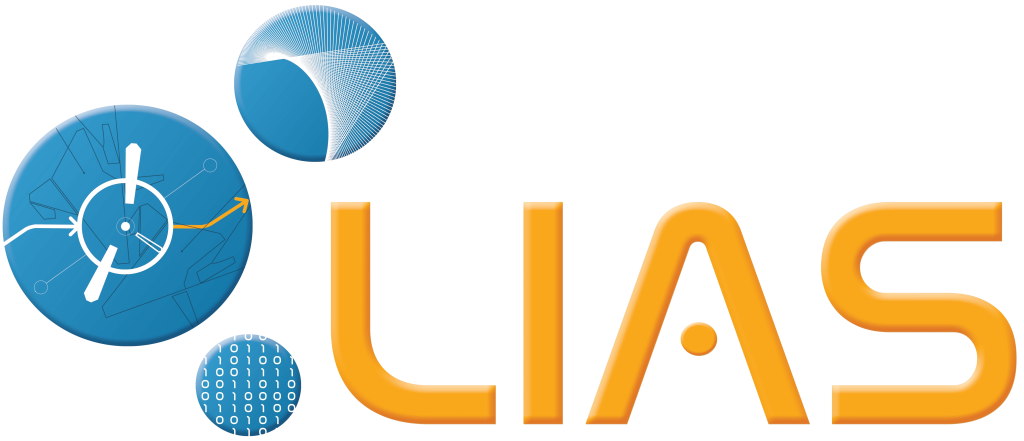
Research Topics of Automatic Control and Systems team
Control strategy for renewable energies and smart grids
TBA
Fractional and multidimensional systems work-group
The dilemma for the control engineer has always been to find the proper model, close enough to the real system but simple enough to allow its study and its use. With the development of numerical algorithms and powerful computers, new models have been proposed in order to reflect more accurately the real systems. Among these new models, one can find the so called fractional systems (where the derivatives representing the system are not necessarily integers) and multidimensional systems also known as nD systems (where the equations take into account the fact that the information doesn’t necessarily propagate in only one direction, a usual simplification). The members of this group are therefore interested in the identification, analysis and control of such systems. The theoretical problems are however so wide that a focus on a few particular techniques has been chosen.
Therefore, the main issues presently considered are:
- Identification and analysis (stability) of nD and fractional systems,
- Control of systems with delays via nD models,
- Analysis and control of nD and fractional systems using robust control approaches,
- Modelling and identification of processes governed by Partial Differential Equation (PDE) (diffusion, propagation) using fractional and nD systems.
The main application fields presently considered are:
- Thermal systems characterization,
- Electrochemical systems characterization (batteries, ultracapacitors),
- Heat exchangers,
- Hot springs (geothermal energy).
Optimization of electric actuators work-group
Two areas of research are covered in this working group. The first one is the diagnosis of faults in electrical machines. Studied defects are electrical or mechanical type. We develop models of faults that separate the faulty part of the healthy one. We use parametric output-error identification methods with a priori information. The second topic concerns the control of electrical machines. This work consists firstly, to propose control strategies for permanent magnets synchronous machines without using the sensor position and secondly to use modern control techniques combined with original brushless excitation of synchronous generators.
The main topics currently under study are:
- Sensorless control of Permanent Magnet Synchronous Machines,
- Optimization of synchronous generators,
- Diagnosis of electrical faults in PMSM,
- Diagnosis of mechanical faults in PMSM,
- Diagnosis of electrical faults in Induction Machines.
Systems Active Control work-group
The purpose of this working group is to develop control algorithms specifically dedicated to problems encountered in the realm of active control and active filtering, i.e. algorithms which tend to minimise multi-sinusoidal disturbances. Those problems are of particular importance in electrical networks, vibration control, fluid mechanics, and so on. The idea is to use a second active device to reduce the disturbances affecting the initial process.
The scientific community has perfectly understood the interest of the feedback synthesis and thus of the control theory in the design of active control laws, these laws replacing the classic passive devices or simply working in addition to them.
Therefore, the "Active Control" working group investigates the control theory and tries to take benefit of its recent developments to establish original control laws which are especially adapted to active control or active filtering. The working group can rely on the theoretical research led in the whole of «Automatic Control and Systems» team of the LIAS and can face this research to practical applications, in collaboration with concerned community.
The main topics and used methods currently include:
- Persistent disturbances rejection (nonstationary, multi-sinusoidal) through internal model control,
- Modelling of systems with sinusoidal perturbations through quaternionic approach,
- Frequency band active Controller (frequency domain approach),
- H2/Hinf Controllers;
- LPV systems and S-procedure approach.
On the application point of view, we are interested in the following areas:
- Electrical Engineering (power systems, control of electrical machines, wind...);
- Transport (Hybrid Electric Vehicle), especially through the hybrid bench at the University of Poitiers;
- Fluid mechanics (Flow control).
Modelling and identification of physical systems
In many fields, a reliable model of the physical system under study is required. Modeling a system is theoretically feasible by using exclusively a white-box model obtained by combing the laws of physics governing the behavior of the process. By definition, this prodecure requires high-level skills in many different fields that could be difficult to afford and may lead to complex and non-parsimonious models. System identification or experimental modeling is an interesting solution for the estimation of physical systems because such a procedure combines prior information and experimental results directly extracted from the plant to identify. The resulting model is often qualified as gray-box model. Whatever the structure of the model (linear, non-linear, linear parameter-varying), the members of this group aim at estimating a behavioral model of the process. They deal with methodological aspects of physical parameter estimation, reconstruction of the input signals and control oriented system identification. Studies are carried out for both monovariable and multivariable systems, either in an open or a closed loop configuration. The developed tools are applied to several types of processes (electrical engineering, thermics, robotics...) and are also used in other groups of the department.
The main issues presently considered are:
- identification of linear and non-linear continuous-time systems,
- development, improvement and initialization of the output-error methods,
- interaction between continuous-time and discrete time identification and models,
- development and improvement of subspace-based identification,
- closed-loop and open-loop identification,
- identification with prior-information,
- re-parameterization of continuous-time and discrete time models,
- parameter estimation of linear time invariant, time variant and parameter-varying models.
The main application fields presently considered are:
- electrical engineering,
- aeronautics and transport,
- robotics,
- thermal energy and energetics,
- wastewater treatment.